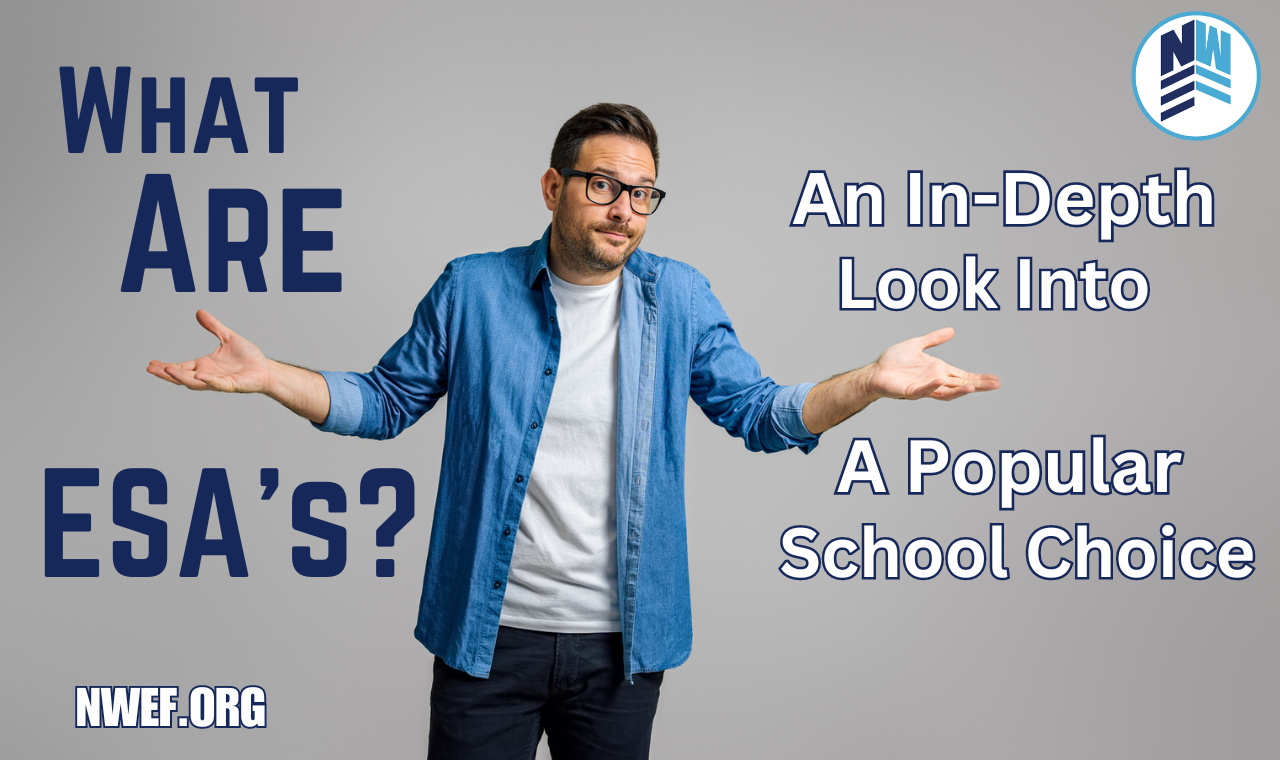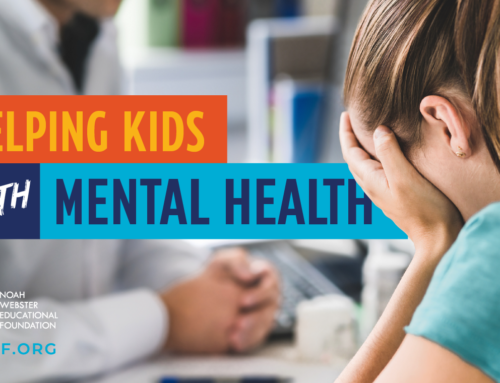
When it comes to terms like “tax credit,” “ESAs,” and “school vouchers,” things get a little ambiguous. Not to mention plain confusing! We know all these terms have to do with school choice, but what exactly do they mean? We know there are school choice laws that allow us to choose schools and receive alternate funding…but how do we carry out those laws in practice?
Well, today we’re going to pull back the curtain on just one of these little mysteries: ESAs, one of the most common forms of school choice funding. Don’t worry, we’ll get to vouchers, tax credit, and all the other obscure terms as we explore school choice over the next couple of months.
Let’s dive right in, because when it comes to ESAs, we have a lot to cover!
What is School Choice?
First, let’s quickly refresh our memories on what “school choice” really means.
School choice is kind of a blanket term. It’s used most often to reference the changes in today’s laws to give parents the freedom to choose which school their child goes to, or how their child is educated.
But actually, there are two sides to the coin.
The Two Sides of School Choice
“School choice laws” do one main thing. They create programs that allow families to take funds that would normally be used by a public school to fund their child’s tuition and use that money to send their child to a school of their choice. This means that funds basically “follow students to the schools or services that best fit their needs —whether that’s to a public school, private school, charter school, home school or any other learning environment families choose,” as EdChoice says.
The other side of school choice is the schools themselves. When people say, “We need school choice!” they may mean we need ways to transfer funds to whatever school we believe our kids should attend. Or they might be talking about wanting a healthy variety of schools or educational options available to choose from.
See how these two meanings of the term “school choice” are two sides to one coin? Alternate funding is on one side, and schools are on the other.
What Does “ESA” Stand For?
Now that we’ve got that question settled, we can focus on today’s school choice topic. And yes, it has to do with the funding side of the coin.
ESAs are a great school choice funding option that the United States has adopted, so it’s important we know what they are.
Quite simply, ESA stands for Education Savings Account. Sometimes you’ll hear it called a Coverdell ESA. Coverdell is the U.S. Senator who championed the program back in the 1990s. Some even simply call them Coverdell accounts.
Well, you might be saying, that just makes it more confusing!
And you’re not wrong. The ins and outs of ESAs are complicated and sometimes just plain confusing. So, let’s break it down for clarity.
What are Education Savings Accounts?
ESAs are accounts that allow you to save money and fund your child’s education at the school of your choice. It’s basically a trust fund or a custodial account.
You can invest to grow your savings, and all the money that goes in will not be taxed, up until your child gets into college or any other post-secondary institution. And when you spend it, it will be tax-free too! Only if you spend it on education, however…but we’ll get to that later.
So ESAs are what they call “tax-deferred” accounts. Investopedia defines that as “investment earnings—such as interest, dividends, or capital gains—that accumulate tax-free until the investor takes constructive receipt of the profits.” Except, you don’t have to pay taxes when you spend the money in an ESA, so that’s the only difference here. There are a few exceptions and restrictions; check out another article at Investopedia to learn more.
ESAs also make it easy for parents to choose which investments to fund the savings account. There really aren’t restrictions on what you can invest in. According to Forbes, parents are “able to choose from individual stocks, ETFs, mutual funds, and even real estate.”
Frequently Asked Questions About ESAs
Now it’s time to move on to the nitty-gritty details. Here are some frequently asked questions about how to start an ESA, how to use it, and what you can and can’t do with it.
Are ESAs Just For College Funds?
Nope! Although if you Google ESAs you might get that impression, ESAs can be used literally every step of the way. From kindergarten to college you can save and spend using an ESA.
Can I Get an ESA For My Child?
If you live in the United States, you can probably get an ESA! Just find a bank, credit union, brokerage, or mutual fund house that will let you open an ESA, and you’ll be set.
One restriction that should be mentioned here is guardian qualification. Even though it would be nice to say that everyone has a fair chance at opening an ESA for their child, that’s not the case. Ramsey Solution points out that “You can’t contribute to an ESA if you make more than $110,000 (single) or $220,000 (married filing jointly).”
Although this is a pretty big restriction, it ensures that ESAs are being used to help people who are facing a real need.
Another restriction worth mentioning here is that you can only open an ESA when your child is under age 18, unless you can get this rule waived because your child has special-needs.
How Do I Open an ESA?
Like we mentioned above, you don’t just have to use a bank to open an ESA. You can use other financial organizations, some of which may have less fees, or discounted fees. So do your research before opening one. You may find that opening an account at a brokerage or a credit union is an even better option.
Now that you’ve picked which organization to open your account with, it’s time to do this thing! First you’ll need to contact the organization and follow the steps they give you. This will include filling out opening documents, possibly filling out a disclosure statement, and signing an ESA document.
If you are the one opening the account on behalf of your child (the “designated beneficiary”), you will need to sign the document as the “grantor/depositor,” or if another individual (such as a family member) is the main contributor to the fund, have them sign as depositor. You’ll have to name a responsible individual on the document to manage the account on the child’s behalf, and a representative for the bank or other financial organization will have to sign it too.
You’ll also need to keep copies of these documents and make sure any third parties you name on the document also have copies.
How Do I Use an ESA?
You’ll use your child’s Education Savings Account just like you would use any other savings account, by withdrawing money to pay for education expenses. For example, the money may go straight to the private school your child is enrolled in, or go to buying the year’s curriculum for your homeschooler.
If you are getting tax deductions or distributions from the government to pay for alternative schooling, these will be deposited into the account and you can use them the same way.
Remember that “contributions must be made in cash, and they’re not deductible,” says the IRS. Also, expenses must be reported on your tax returns, and ESAs restrict qualified education expenses to tuition, room and board, fees, books, equipment (including computers and devices), tutoring, internet access, and special needs services. If you violate this, taxes will apply.
Are There Other Restrictions?
To wrap this up, let’s look at a few more restrictions we didn’t cover above.
- Ordinary income taxes apply to non qualified withdrawals out of your ESA and there may be a 10% IRS penalty.
- There are restrictions on how much money can be put into the account. The IRS says, “There’s no limit to the number of accounts that can be established for a particular beneficiary; however, the total contribution to all accounts on behalf of a beneficiary in any year can’t exceed $2,000.”
- The beneficiary of the account (your child) must use the money by age 30. After that, if there is still money in the account, you or your child have the freedom to apply that money to another child’s education.
Expanding School Choice in America
School choice is vital. The more competition, the better chance you have of getting the best of the best. The same applies to education!
ESAs make school choice possible for so many families, and they have jump-started school choice in America. They’re worth learning about and considering using in your own journey to providing your child with a great education.
Let’s take advantage of the opportunity ESAs provide and continue expanding school choice in America.





Appreciate the recommendation. Let me try
it out.
I’ve read several good stuff here. Definitely value bookmarking for revisiting.
I wonder how a lot attempt you put to create this kind of fantastic informative
site.
If you want to obtain a good deal from this piece of writing then you have to apply
such strategies to your won weblog.
Spot on with this write-up, I absolutely think this web site needs
a lot more attention. I’ll probably be back again to
read through more, thanks for the advice!
Marvelous, what a web site it is! This web site presents useful facts to us, keep it up.
There’s definately a lot to learn about this issue. I really like all the points you have made.
Hello There. I found your blog using msn. This is an extremely well written article.
I’ll make sure to bookmark it and return to read more of your useful information. Thanks for the post.
I’ll definitely comeback.